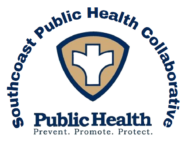Environmental Justice Populations
Environmental Justice (EJ) is based on the principle that all people have the right to be protected from environmental pollution and to live in and enjoy a clean, healthy environment. Various forms of discrimination and racism have created long-standing health inequities for people of color and lower-income individuals. These populations have historically been excluded from meaningful participation in decisions that impact their communities’ environmental health. People of color and people with limited incomes are more likely to live near toxic waste sites, in areas with high air pollution, and in low-quality housing because of the inequitable distribution of high pollution sites. Structural inequities result in fewer healthcare providers, limited access to transportation options, and limited access to health information in the community due to inaccessible health communications and lack of access for non-English speakers.
In Massachusetts, an environmental justice (EJ) population is a neighborhood where one or more of the following criteria are true:
- The annual median household income is 65 percent or less of the statewide annual median household income
- Minorities make up 40 percent or more of the population
- 25 percent or more of households identify as speaking English less than "very well"
- Minorities make up 25 percent or more of the population and the annual median household income of the municipality in which the neighborhood is located does not exceed 150 percent of the statewide annual median household income.
The state organizes environmental justice communities by census-designated block groups.
Learn more about the state's environmental justice populations via Mass.gov.
